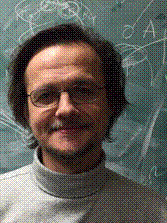


Paul Cisek
University of Montréal, Canada
Brain evolution and the continuous extension of control
In theoretical neuroscience, it is generally assumed that the principal function of the brain is 'information processing': the encoding and manipulation of representations that can be used to build knowledge, make decisions and produce plans of action. This view leads to a subdivision of brain functions into putative processes such as object recognition, memory storage and retrieval, decision-making, action planning, etc., each of which can be expressed in terms of how representations are encoded and transformed. However, neurophysiological data do not support many of the predictions of these classic subdivisions. Instead, there is divergence and broad distribution of functions that should be unified, mixed representations combining functions that should be distinct, and a general incompatibility with the conceptual subdivisions posited by classical theories of information processing. In this talk, I will explore the possibility of resynthesizing a different set of functional distinctions, guided by the growing body of data on the evolutionary process that produced the human brain. I will summarize, in chronological order, a proposed sequence of innovations that appeared in nervous systems along the lineage that leads from the earliest multicellular animals to humans. Along the way, functional subdivisions and elaborations will be introduced in parallel with the neural specializations that made them possible, gradually building up an alternative conceptual taxonomy of brain functions. The resulting framework supports the proposal, made for many decades, that the principal function of the brain is not to build knowledge about the world, but to govern interaction with the world through closed-loop feedback control. This extends physiological control by incorporating reliable properties of the external environment to establish policies that maintain the organism in a favorable state, taking advantage of reinforcement learning and predictive processing. This shift of perspective leads one to emphasize computational mechanisms that prioritize pragmatic outcomes over decoding accuracy, mixing variables in just the kinds of ways observed in real neural data. In particular, it is proposed that instead of serial processing stages of perception, cognition, and action, the functional architecture of the brain consists of nested and parallel sensorimotor control circuits adapted to an animal's species-specific behavioral repertoire, engaging in a continuous competition between conflicting demands and opportunities afforded by the animal's state in its environment. I suggest that this alternative, evolution-based taxonomy may better delineate the functional pieces into which the brain is organized, and can offer a more natural mapping between behavior and neural mechanisms.